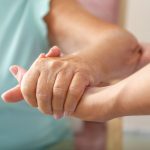
Doctors who overprescribe antibiotics are often blamed for medication-resistant illnesses, but new research points to another potential culprit: air pollution. Controlling air pollution could reduce antibiotic resistance, greatly reducing deaths and economic costs, according to a new in-depth global analysis were published Aug. 7 in The Lancet Planetary Health.. “Antibiotic resistance and air pollution are each in their own right among the greatest threats to global health,” said lead author Hong Chen, a professor at Zhejiang University in China. “Until now, we didn’t have a clear picture of the possible links between the two, but this work suggests the benefits of controlling air pollution could be twofold: Not only will it reduce the harmful effects of poor air quality, it could also play a major role in combatting the rise and spread of antibiotic-resistant bacteria,” Chen said in a journal news release. Some potential pathways include hospitals, farms and sewage-treatment facilities that emit and spread antibiotic-resistant particles through the air and across distances, the study found. Evidence suggests air pollution contributes to the spread of this antibiotic-resistant bacteria, according to the study. Sources of air pollution called PM2.5 include industrial processes, road transportation and domestic coal and wood burning. About 7.3 billion people globally are directly exposed to unsafe average annual PM2.5 levels. About 80% of those people live in low- and middle-income countries, the… read on > read on >


















